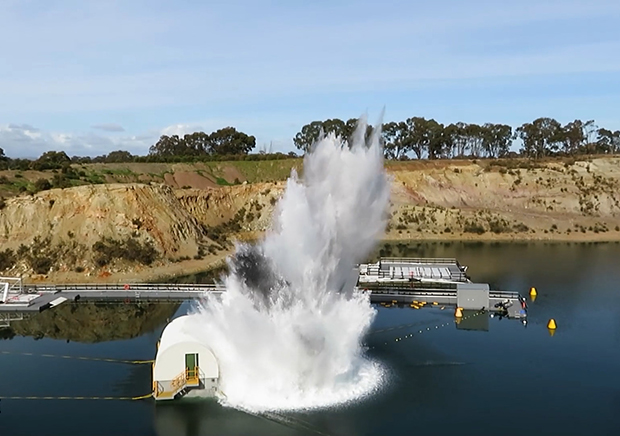
Climate Action: Recovery-Based Design


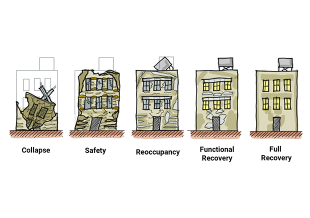 Thornton Tomasetti
Thornton Tomasetti
Current building codes focus on life safety without consideration for repairability or functional recovery. Performance-based design (PBD) addresses this gap by integrating stakeholder goals and future hazards into building design. This week in our continuing series showcasing how engineers and scientists can play a key role in addressing the short- and long-term challenges of climate change, we look at an emerging variation of PBD: recovery-based design. This systematic approach aims to reduce post-disaster recovery time through a process that includes hazard assessments and stakeholder-driven performance metrics.
Resilience is a fundamental aspect of climate action because communities need to adapt to the irreversible changes caused by climate change. The first step in resilience planning is to identify all of the hazards that may affect the asset of interest and how those hazards may change during the asset lifetime. Incorporating this holistic view of natural hazards into the design of a new building or retrofit of an existing one is not possible within the boundaries of current building codes since they do not address future hazards. Furthermore, building codes set minimum standards that focus on providing a reasonable level of safety for occupants without any reassurance of the inhabitability, functionality or even repairability of the structure after the event. For instance, a code-compliant building is only expected to avoid collapse after a strong earthquake, a performance known as "life safety," which implies that significant damage and demolition are perfectly normal outcomes.
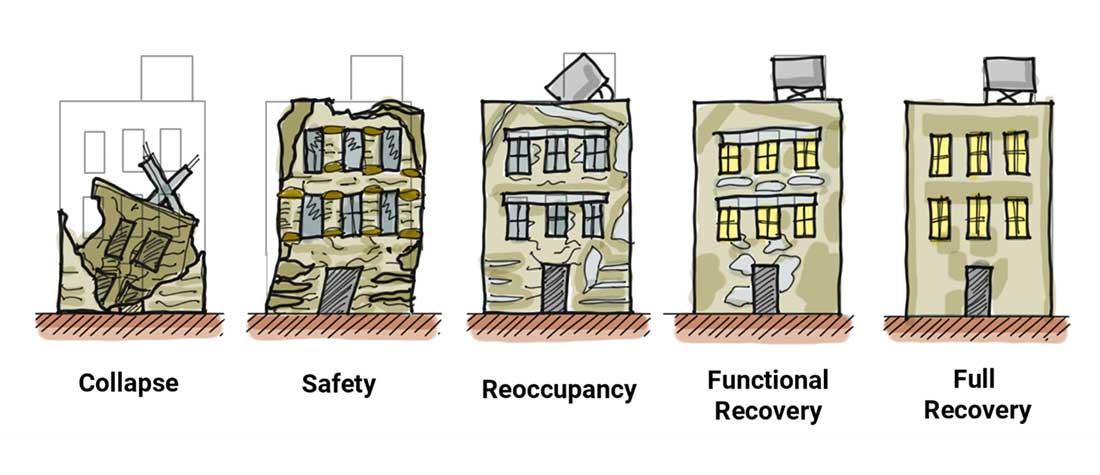 Range of building performance levels.
Range of building performance levels.
One option that tackles natural hazards while incorporating alternative performance expectations from stakeholders is the performance-based design (PBD) approach. PBD is a rational approach to design that enables the design team to explicitly incorporate the goals of the stakeholders in the basis of design. This way, we can address the challenges of future climate change, consider performance goals beyond safety and develop designs that avoid wasting resources that don’t improve performance. PBD can be applied to any potential hazard, and Thornton Tomasetti has been using it for years in projects involving earthquakes, fire, wind, flooding, energy, and security.
The performance-based design process is iterative, just like conventional design. The difference is that in every iteration, the design team not only compares engineering quantities such as displacements in every floor with prescriptive limits, but also compares explicit performance metrics with the targets that the stakeholders selected. These performance metrics typically fall within one of the following dimensions: repairability, economic loss, and functionality. When the main objective is reducing the recovery time, the project becomes a recovery-based design project.
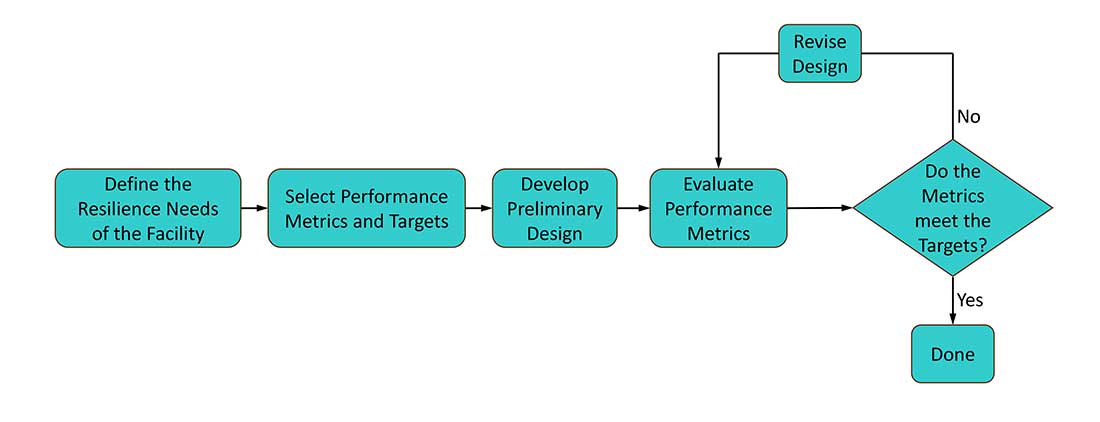
The first step in a recovery-based design project is selecting the performance objectives and relevant metrics that inform our client’s decision making. This process involves workshops and guided discussions with stakeholders to understand our client’s needs, expectations, and perception or risk.
The objective is arriving to a definitive statement from the stakeholders—owner, tenants, building officials—as to what are the desired performance metrics that are important for them, what are the acceptable limits for each metric, and what is the level of confidence to achieve that acceptable limit. An illustrative example of performance targets for an extreme hazard is shown in the Table below:

In a recovery-based design project, the level of sophistication in the analysis is crucial to reliably calculate the performance metrics that are relevant to the client. Any recovery-based design workflow has four stages: (1) Hazard assessment, (2) Structural response, (3) Damage assessment, and (4) Decision variables or performance metrics. These workflows should account for the uncertainty in every step of the process following well stablished methodologies such as FEMA P58 for seismic design. Similar workflows can be implemented for any hazard.

In some cases, we could use these sophisticated analyses to challenge prescriptive code requirements that may unnecessarily increase the cost of the project and convince the building officials (and a peer review panel perhaps) that our design meets the code expectations. This is the typical approach on tall building projects that exceed the height limits of certain structural systems in the code.

In other projects, recovery-based design enables the development of cost-effective recommendations that significantly increase the performance of the building, reducing the likelihood of damage and their associated emissions after a hazardous event. These recommendations could be offered as a menu to the client to choose from based on a rigorous estimation of cost and benefits in performance. A recent example of this type of projects is an academic building project in the Northeast where Thornton Tomasetti developed four simple design alternatives above code-minimum that targeted non-structural elements and specific structural components to achieve a significant reduction time to recover functionality after the design basis earthquake (the controlling hazard for this project).
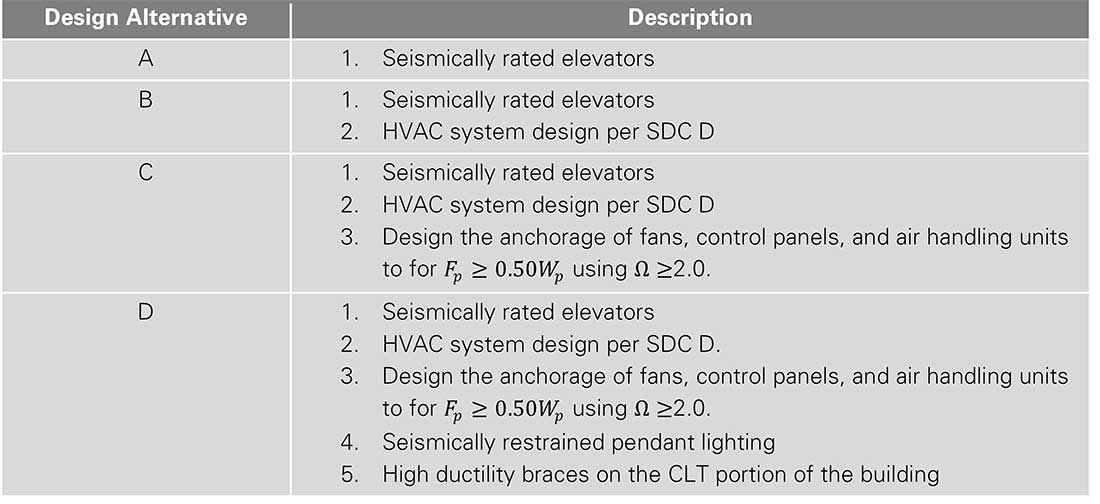
In conclusion, recovery-based design is a tool to explicitly consider the stakeholder goals in the design process and make sure that we deliver a project that cost-effectively adapt and prepare for the potential impacts of climate change and other natural hazards.
Climate change is one of the biggest challenges facing our society. And because it affects everyone, it demands our creativity, passion and collaboration to build a better, more enduring world. See how Thornton Tomasetti is one of the only firms with the expertise to help you think holistically about a range of steps to address climate change.



